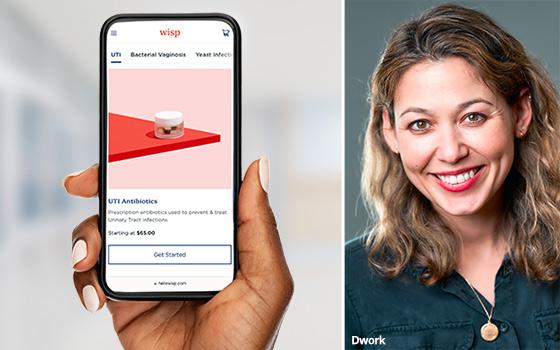
Can you guess what Jennifer Dwork, VP of Marketing at
Wisp’s favorite censored ad campaign is? Also, Jennifer explains how their provocative marketing generates buzz.
1. Recently you had OOH ad placements on trash cans to capture attention and promote Wisp and also
Daye’s vaginal test. How were you able to determine where to place the ads?
We consider a few different factors when it come to our OOH ads:
Exposure: How populated is the area? Is there a lot of foot traffic?
Performing Geo: Is this a successful area we can continue to scale within?
advertisement
advertisement
Demographics: Is it a diverse population, with a large community of females 18 - 45?
Buzz factor: Will it be an area that can generate some buzz?
2. How do you balance knowing when to be provocative
in your copy? Do you conduct tests to see which copy your audience will react to positively?
We are always testing creative in our performance channels, like paid social,
however, with OOH it’s more challenging to do a direct test. Therefore, we generally like to push the bounds, and go for creative that we think will generate some buzz. OOH is meant to grab
eyeballs. Even if it doesn’t directly convert, we think our campaigns are successful if folks are talking about them, whether it’s on social media, in the press, or with word of mouth.
That said, we do measure the impact to branded search impressions and sales in a particular geo in which we are running the ads, and we have generally seen success when we have impactful creative that
can penetrate a market.
3. What ad campaign do you wish you had worked on? Why?
Molly Baz and Swehl’s Big Titty Cookie campaign that was censored in
Times Square. Wisp similarly faced censorship with our “we love healthy vaginas” campaign we also ran in Times Square (after facing much pushback from the company that owns the ad space).
Molly and the team did a phenomenal job of highlighting the inequity surrounding women’s health advertising.
4. What’s the hardest thing to prioritize in
your organization?
We’re in a fast-paced environment, and we are always working on new campaigns and launching new products. The most important thing in our work is prioritizing
the patient - making sure they feel heard and are able to access care they need from us. One of the hardest things to prioritize is, I think, as a remote company, it can be the team bonding time.
That’s why I love it when I am able to meet up with a colleague in person, or have a team member fly to New York to work an event with me.
5. How do you
recharge?
Yoga, daily walks, any beach time I can get, Netflix binges, exploring new restaurants.
If you’re interested in submitting content
for future editions, please reach out to our Managing Editor, Barbie Romero at Barbie@MediaPost.com.